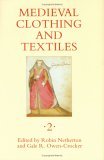|
A website describing a mid-16th century Italian jeweled marten’s head at the Walters Art Museum describes one line of thought regarding the presence of this accessory in portraits of women:
“The marten was thought to conceive its young through its ears, free from sexual intercourse, and was thus associated with Christ’s miraculous conception. This symbolic meaning is indicated by the presence of the dove of the Incarnation on the creature’s snout. Such objects were fashionable in Europe during the sixteenth century. They also served as protective amulets for pregnant women.”
The medieval legend to which the Walters’ website refers is referenced in the story of Galanthis in Ovid’s Metamorphoses, and also in the Epistle of Barnabas. Although Isidore of Seville (Etymologies, Book 12, Chapter 3) asserts that “Falso autem opinantur qui dicunt mustelam ore concipere, aure effundere partum,” this legend continues to appear as a fact of natural history in medieval bestiaries (such as The Aberdeen Bestiary and a 15th century French bestiary [MMW 10 B 25, fol. 24v]), and is illustrated in the Queen Mary Psalter (see The Medieval Bestiary: Weasel).
This description seems to be a lot more realistic than the line of thought usually put forward by reenactors and/or costumers – that it is meant to attract fleas to the fur, rather than the wearer – a theory which appears (at the moment) on Wikipedia, as well as plenty of other websites. It does seem highly unlikely that wealthy women would wear an such an ostentatious accessory to advertise their personal vermin problems, though. It appears that the Italian word zibellino (pl. zibellini) may refer to most of the mustelids, and so may be a more appropriate term for this 16th century fashion accessory than “flea fur.”
See also The Muff in Sixteenth Century Dress.
- Portrait of Lucina Brembati by Lorenzo Lotto, c. 1506
- Portrait of Doña Isabel de Requesens by Raphael and Giulio Romano, c. 1518
- Portrait of a lady by Bernardo Luini, c. 1520-1525
- Lady playing a lute by Bartolomeo Veneto, c. 1530
- Portrait of a Roman courtesan (Antea) by Parmigianino, 1530-1535
- Giulia Gonzaga in mourning by Cristofano dell'Altissimo, c. 1535
- Portrait of Eleonora Gonzaga della Rovere by Titian, c. 1536-1537
- Portrait of Camilla Gonzaga de' Rossi, Countess of San Secondo, with her sons by Parmigianino, c. 1539-1540
- Portrait of a young woman by Moretto, 1540s
- Portrait of a lady by Niccolò dell'Abbate, c. 1549
- Portrait of Claude de Châteaubrun de Beaune dame de Gouffier
- Portrait of Isotta Brembati Grumelli by Giovanni Battista Moroni, c. 1550
- Portrait of Isabella de' Medici attributed to Alessandro Allori, c. 1550-1555
- Portrait of Countess Livia da Porto Thiene and her Daughter Deidamia by Paolo Veronese, c. 1551
- Portrait of Bianca Ponzoni Anguissola by Sofonisba Anguissola, c. 1557
- Portrait of a lady by Sofonisba Anguissola, 1558
- Self-portrait of Sofonisba Anguissola, c. 1559
- Portrait of a lady by Francesco Beccaruzzi, c. 1560
- Detail from a family portrait by Giovanni Antonio Fasolo, 1560s
- Print with two muzzles and a fox-paw by Erasmus Hornick, 1562
- Portrait of Queen Isabel de Valois by Juan Pantoja de la Cruz
- Portrait of Angelica Agliardi de Nicolinis
by Giovanni Battista Moroni, c. 1565
- Portrait of a lady, aged 30 by Giovanni Battista Moroni, c. 1570
- Portrait of Frances Sidney, Countess of Sussex c. 1570-1575 (see detail)
- Una Gentildona Maritata Padovana and a lady in a white dress in Mores Italiae, 1575
- Portrait of a noblewoman by Lavinia Fontana, c. 1580 (see detail)
- Portrait of a lady in white by Tintoretto, c. 1581-1584
- Portrait of the Gozzadini Family by Lavinia Fontana, 1584
- Portrait of an unknown lady attributed to William Segar, c. 1595
- Gentildona Padoana, Album Amicorum of a German Soldier (LACMA M.91.71.60), 1595
|

